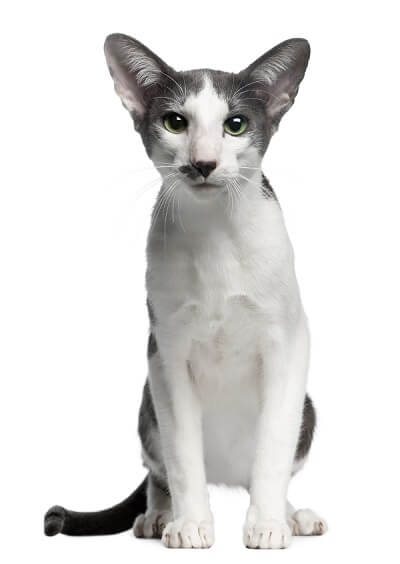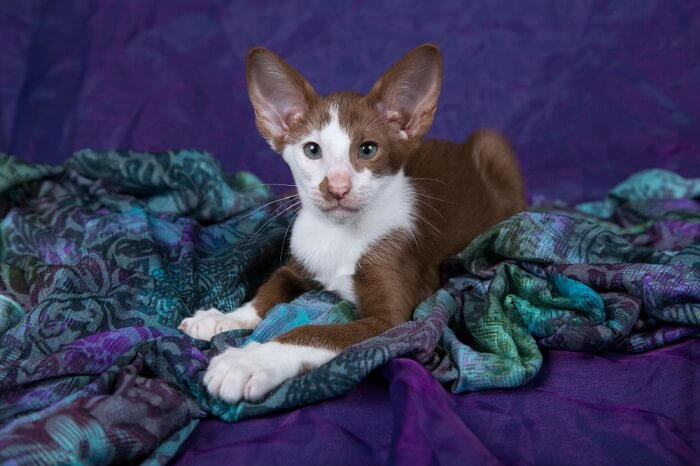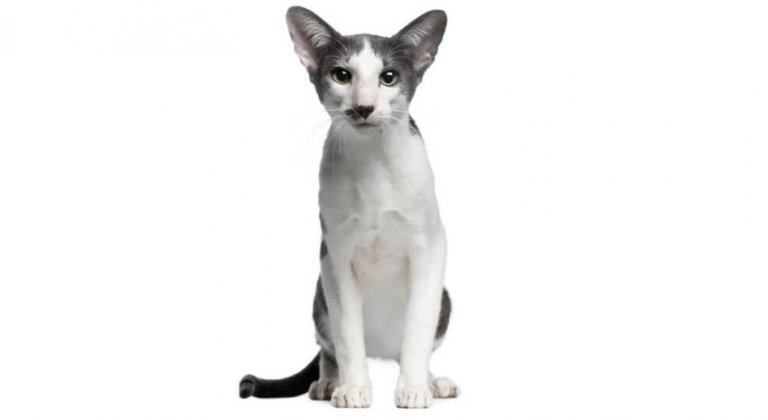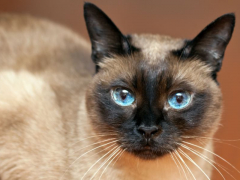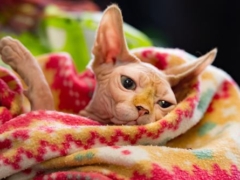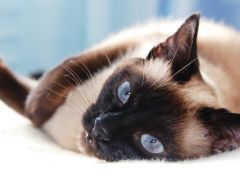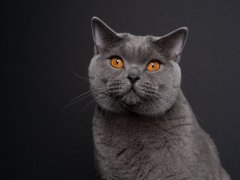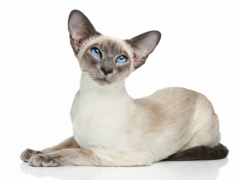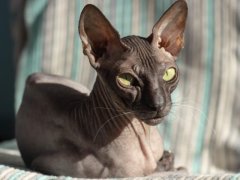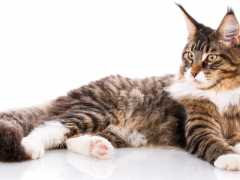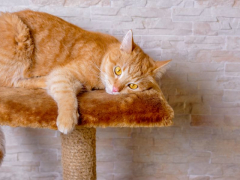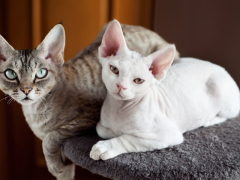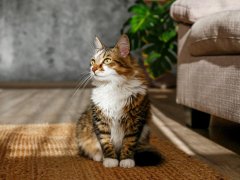Personality and Temperament
An engaging personality plus an adorable appearance add up to none other than the Oriental Bicolour Cat!
These stunning kitties are almost identical to their Oriental Shorthair or Oriental Longhair cousins; in fact, many of these Orientals are also Oriental Bicolor cats. We’ll cut through the confusion in the breed history discussion but first, what can you expect if you bring an Oriental Bicolour into your family?
As it turns out, these fascinating felines have a whole lot more than mesmerizing good looks going for them! Their personalities tend toward the playful, curious side - and that’s probably due to heavy Siamese influence. These intelligent cats love to follow their family members around, getting involved in whatever’s happening at the moment. Like their close cousins, they are exceptionally chatty, chirping, warbling, and sometimes meowing loudly to emphasize a point!
Not only do Oriental Bicolor cats appreciate their human family members, they have a fondness for other felines and they even make friends with dogs. Where some breeds tend to be a bit standoffish with other pets, Oriental Bicolours like constant companionship and develop close relationships with other animals. These kitties like to have at least one friend nearby at all times and without enough attention from the people and animals they bond with, can develop serious depression.
Oriental Bicolors are a bit more demanding than many other cats, it’s true: But what they require in attention, they repay infinitely. Loving, attentive, fond of cuddling, and always happy to brighten even the gloomiest day, this kitty is one you’ll cherish for a lifetime.
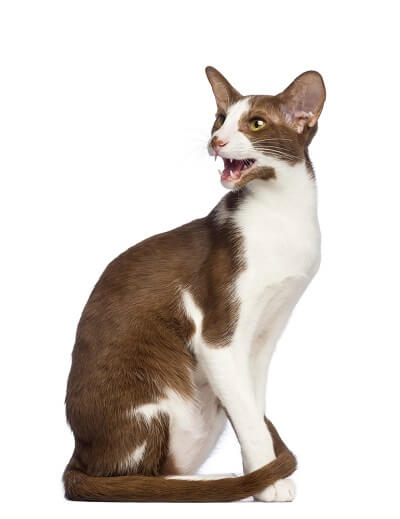
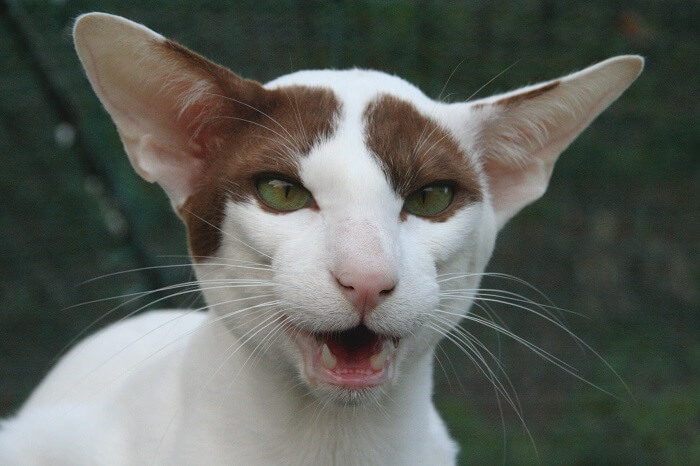
Care
Nutrition
Grooming
Exercise
Health
Oriental Bicolour cats have no exceptional nutritional needs, however they will greatly benefit from a high-protein diet that includes real meat or fish as the number one ingredient. The better your cat’s food quality, the better their health and longevity is likely to be.
The Oriental Bicolour usually has a short single-layer coat, so there’s no fluffy undercoat to shed. These cats can keep themselves looking fabulous without much help from their people. Still, it’s helpful to offer a quick brushing once or twice per week. This can help reduce shedding and eliminate the risk of hairballs, plus it’s something your feline friend is likely to enjoy! After brushing, you can polish the coat by giving it a rubdown with a chamois or a silk scarf.
Of course longhaired Oriental Bicolor cats need more attention in the form of daily brushing.
Since Oriental Bicolour cats are fond of climbing, you may wish to protect your furniture by keeping their claws trimmed. Teach your kitten to accept “invasive” grooming procedures like tooth brushing and claw trimming from a young age, so it’s part of their routine.
Oriental Bicolour cats are accomplished athletes, and you’ll have no trouble ensuring that they get enough exercise for good health. Running, jumping, and climbing are favorite activities, and like other Oriental cats, this breed excels at interactive games such as fetch.
Set your pet up for success (and keep your furniture intact) by offering a tall cat tree and other items such as window seats and scratching posts that allow for the expression of athleticism minus any cringing on your part. Without these items, your Oriental Bicolor will look for other places to offer elevated views - your Great Aunt’s 19th century china cabinet might be one of them!
Oriental Bicolor cats are always looking for things to examine and play with, so keep your kitty well stocked with an assortment of toys. Without them, your cat will find other things to play with - and you might not appreciate their choices!
Oriental Bicolour cats are a robust breed in general. Still, there is a risk of complications that are common to the Oriental group in general including cancer, asthma, dilated cardiomyopathy, megaesophagus, liver amyloidosis, feline lower urinary tract disease, and progressive retinal atrophy. Some are cross-eyed.
History
The first Oriental Bicolour cats were the result of pairings initiated by Lindajean Grillo, who owned Ciara Cattery. In 1979, Grillo decided to pair Siamese cats with bicolored American Shorthair cats. The most appealing bicolored offspring were then mated back with Siamese or Oriental cats to enhance type.
In Europe - primarily in France and the Netherlands - breeders worked to create their own Oriental Bicolour cats, first pairing a red and white Moroccan street cat with a Siamese, and then pairing a black and white Cornish Rex cat with a Siamese.
American cats were imported as a method of assuring genetic diversity when mating Oriental Bicolor cats with one another. The International Cat Association (TICA) granted its official recognition in 1983, and a cat named Ciara Quite-N-Oreo was the first TICA Oriental Bicolour champion.
In 2003, Federation International Feline (FIFe) granted championship recognition status to bicolor Oriental Shorthair cats. The organization granted recognition to white and colorpoint cats from the same group in 2005, but separated them further into the breed name Seychellois.
In 2004, Oriental Bicolour cats were imported to the UK. The Governing Council of the Cat Fancy (GCCF) granted recognition in 2006, and in 2008, the breed achieved provisional status.
It’s worth noting that different organizations categorize Oriental Bicolor cats differently. Some differentiate between long and shorthaired varieties, and some opt to keep solid and colorpoint patterns separate from one another.
The GCCF treats Oriental Bicolour cats as a separate, distinct breed and prohibits cats that carry color-pointed longhair genes. GCCF does allow for outcrossing but only to Siamese, Balinese, Oriental Longhair, and Oriental Shorthair cats. The resulting offspring are not allowed registry under the outcrossed parent’s breed but instead, must be registered as Oriental Bicolour cats, with one exception: Any offspring without white spots can be registered and shown as Orientals.
